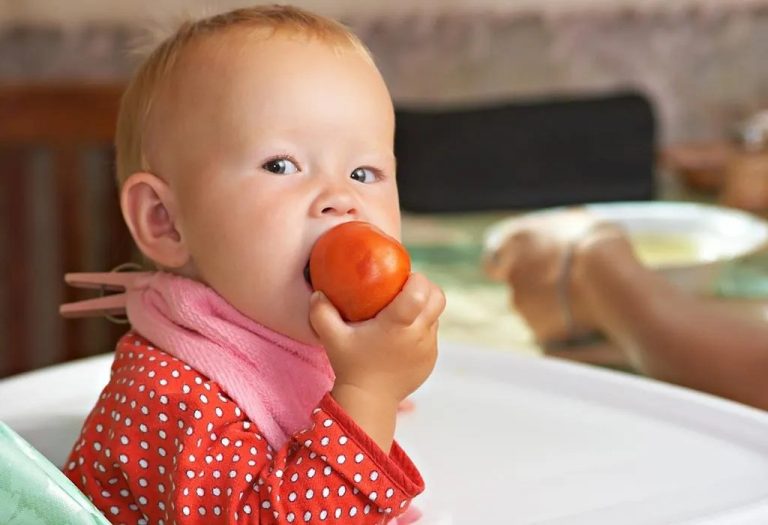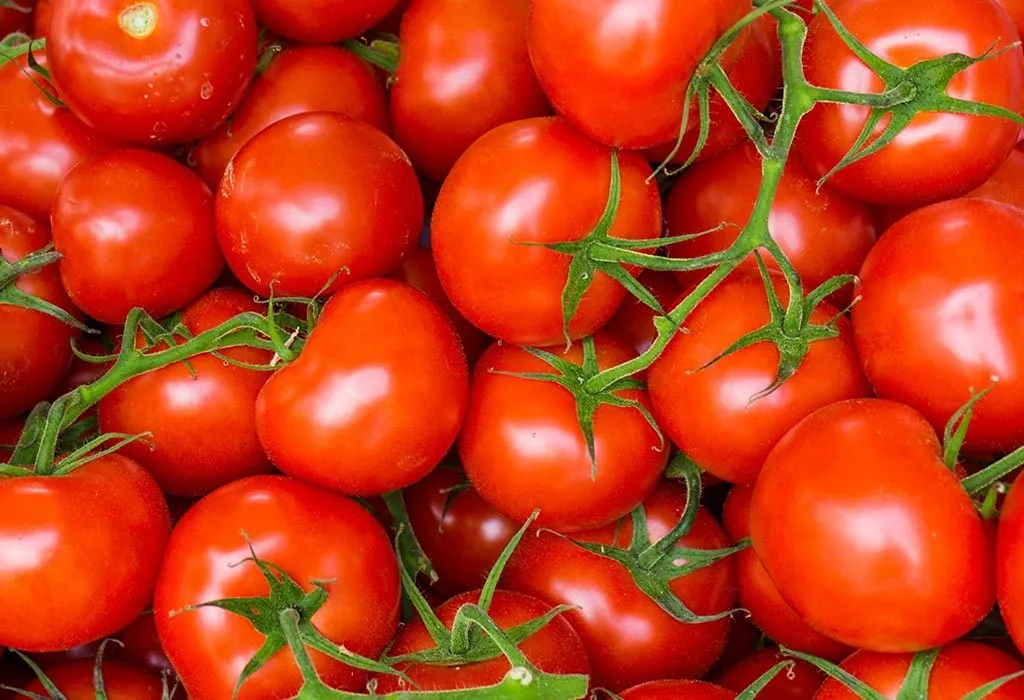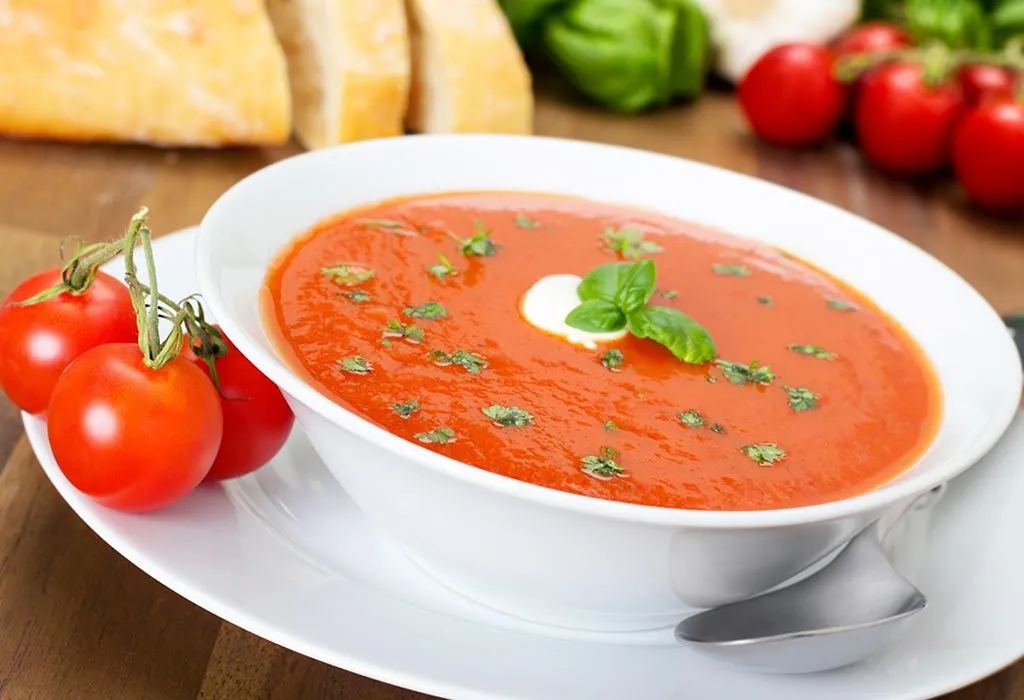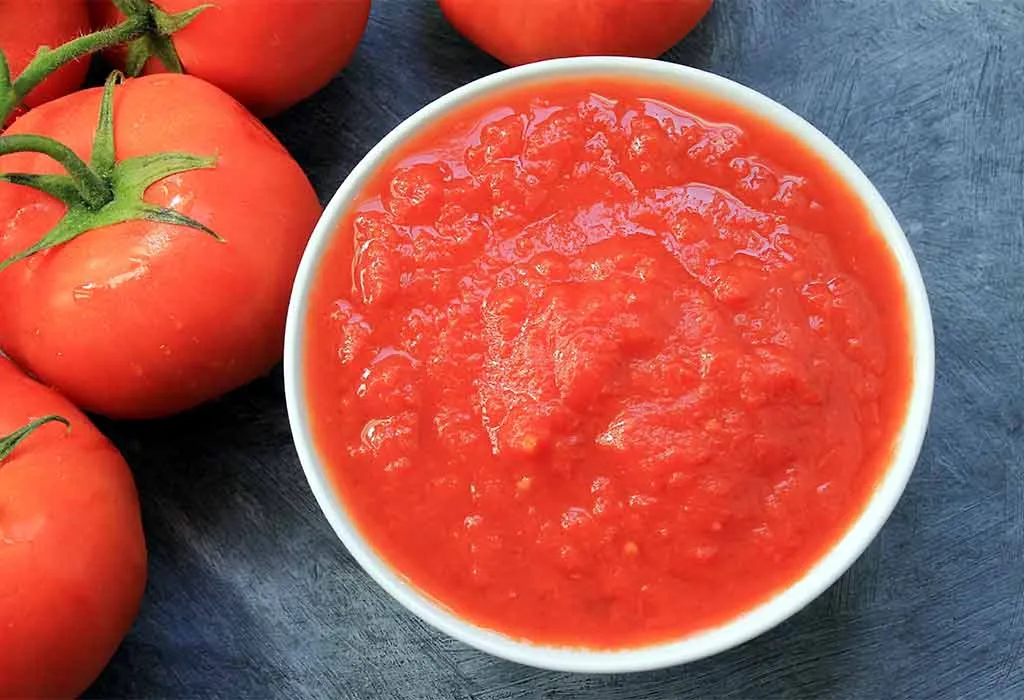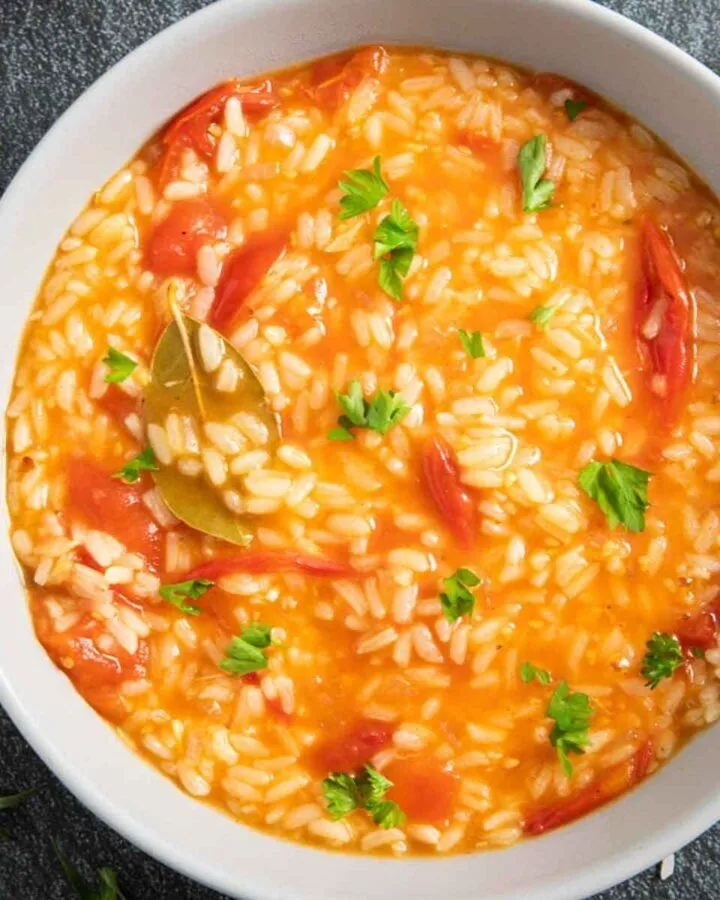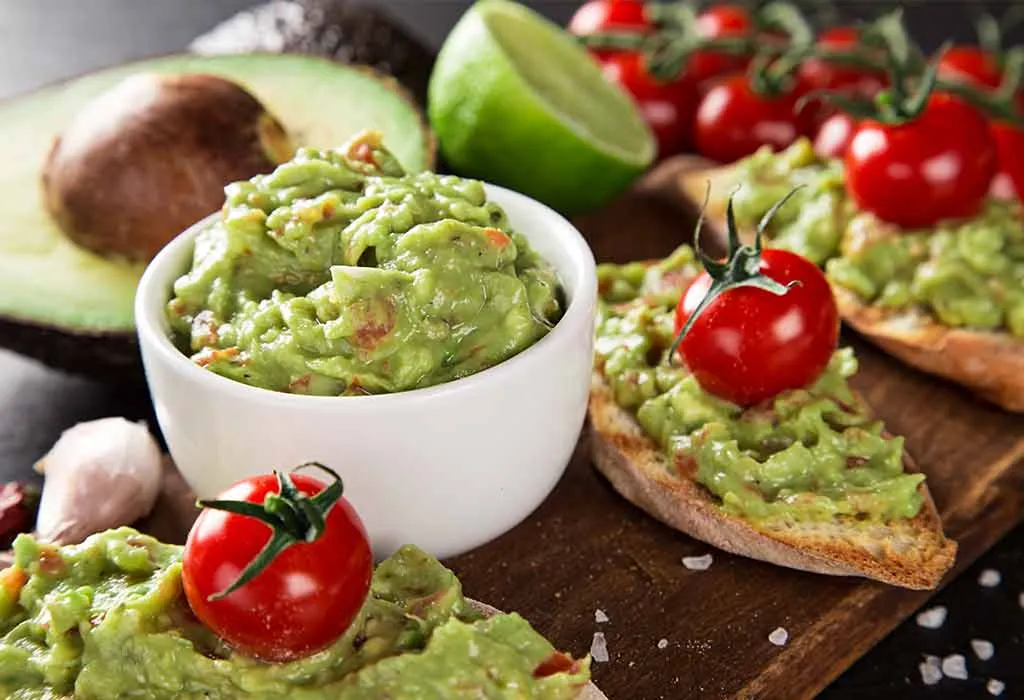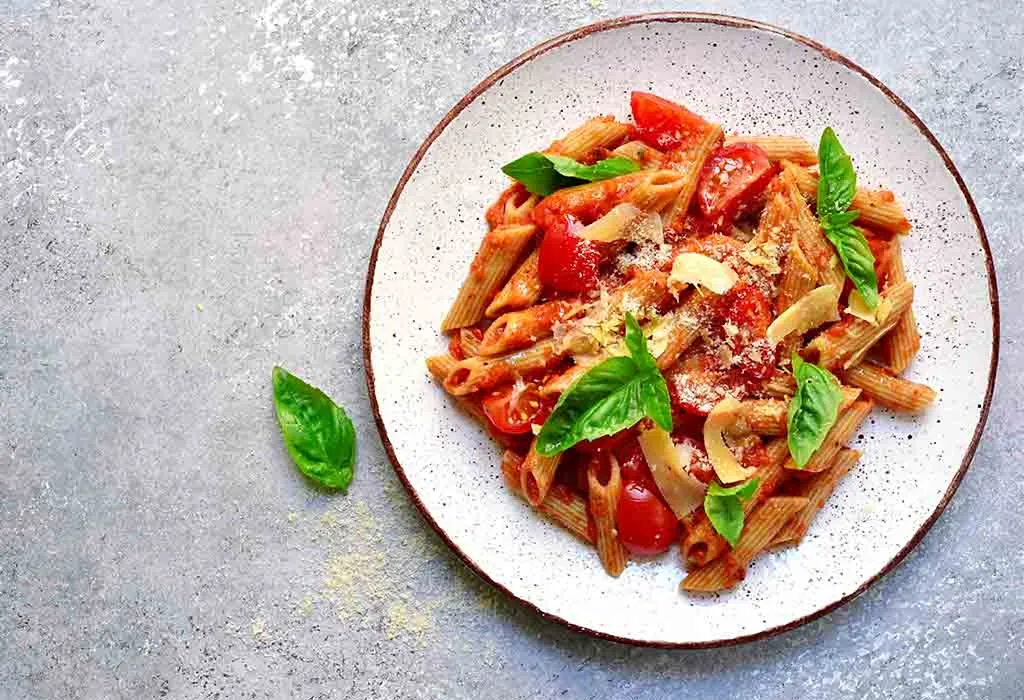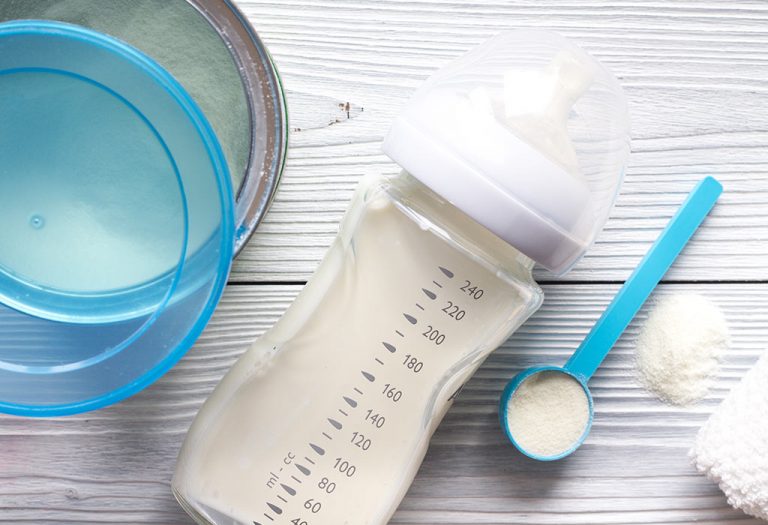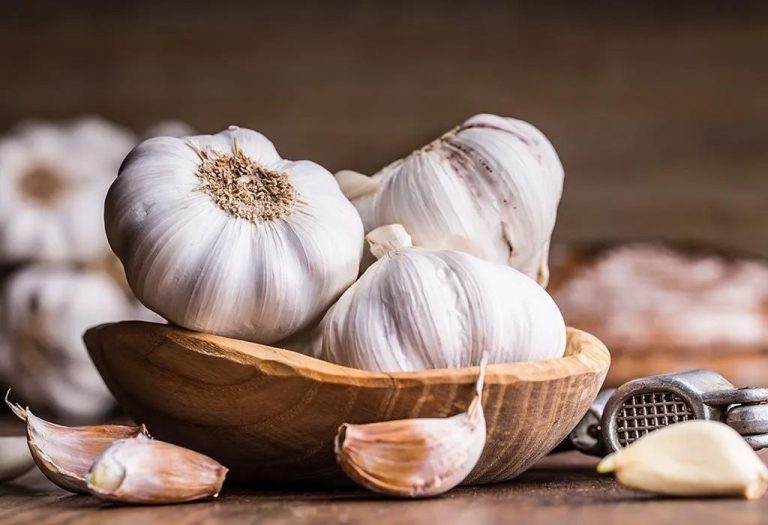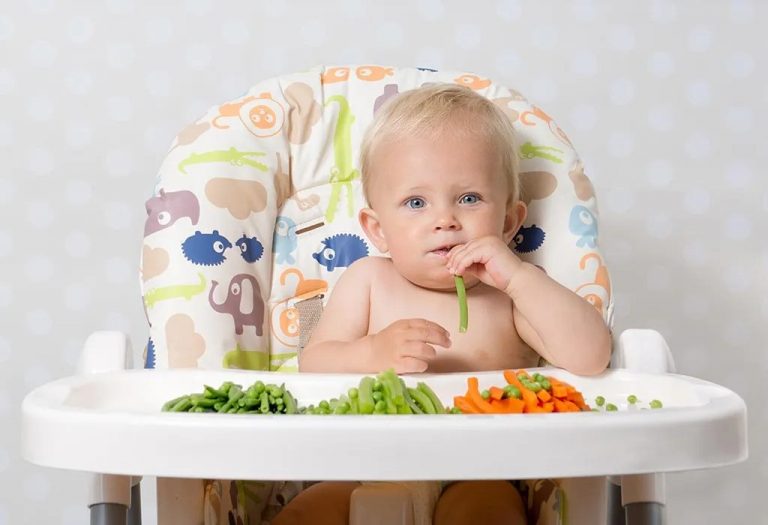Tomatoes for Babies – When to Introduce, Benefits, Soup Recipes & More

Raising a child is a huge responsibility, and providing them with the right nutrition is crucial for their growth and development. One highly beneficial and versatile food is the tomato. It’s packed with essential nutrients that can significantly aid in a child’s health. You can introduce tomatoes for infants in various forms, but it’s important to consider how you incorporate them into their diet and understand their potential effects.
Once you’re familiar with the numerous health benefits of tomatoes and the different ways they can be prepared, you may feel more comfortable starting to include this nutritious fruit in your child’s meals. This approach ensures that your child receives the advantages of tomatoes in a safe and beneficial manner.
When Can You Start Giving Tomatoes to Your Baby?
Babies can be fed tomatoes as they have plenty of health benefits. The right age when you can introduce tomatoes to your child is around 8 to 10 months. Tomatoes generally do not cause any allergies, but keep an eye out, just in case, for rashes on your baby’s skin after they’ve consumed tomatoes.
Nutritional Value of Tomatoes
Tomatoes have plenty of nutrition in them. Here’s how much nutrition is present in 100 grams of tomatoes:
| Nutrient | Amount in 100 grams |
| Water | 94.78 grams |
| Energy | 16 Kcal |
| Protein | 1.16 grams |
| Carbohydrate | 3.18 grams |
| Calcium | 5 mg |
| Fibre | 0.9 grams |
Health Benefits of Tomatoes for Infants
There are plenty of health benefits linked with tomatoes, especially for infants:
1. Vitamin A
Tomatoes are a rich source of Vitamin A, and the red and orange colour that is associated with them is due to the presence of alpha-carotene and beta-carotene. Vitamin A is vital for the development of the baby’s eyes (1).
2. Source of Antioxidants
Tomatoes are also an excellent source of antioxidants, which are essential for a baby’s diet (2). A baby’s rate of metabolism is much higher than an adult’s, and this increases the number of free radicals in their body. If the number of free radicals increases, the chances of cellular and DNA damage rise as well. Antioxidants counteract this and help neutralise it.
3. Build Stronger Bones
Vitamin K is found in abundance in tomatoes, and they’re essential to help build the bones in an infant over time.
4. Stronger Immune System
There are a lot of biochemical entities found in tomatoes that help in strengthening the immune system, which is very crucial for the development of the baby
5. Treats Acidosis
Though it is thought that tomatoes have a lot of acid in them, they actually help counteract the same in a baby’s body. By including tomatoes in your child’s diet, you can increase the amount of alkanet and treat acidosis.
6. Reduces Lead Toxicity
Lead toxicity is another problem that can be counteracted with tomatoes. A large amount of vitamin C is present in tomatoes, which helps in reducing the harmful effects brought on by lead.
Side-Effects of Tomatoes on Babies
Babies have sensitive digestive systems, and certain foods may cause adverse reactions. Here are a few possible side effects to be aware of when feeding tomatoes to infants.
1. Acid Reflux
Tomatoes contain high levels of acidity, which may cause acid reflux or heartburn in some babies. This can lead to discomfort and irritability, especially if introduced in large quantities.
2. Allergic Reactions
Though rare, some babies may develop allergic reactions to tomatoes. Symptoms can include hives, swelling, or difficulty breathing. If you notice any of these signs after feeding your baby tomatoes, it’s crucial to seek medical attention immediately.
3. Diaper Rash
The acidity in tomatoes can irritate a baby’s delicate skin, particularly when it passes through the digestive system. This can lead to diaper rash, especially if the baby has frequent bowel movements. To minimize this risk, monitor your baby’s skin for any signs of irritation after consuming tomatoes.
How to Purchase and Store Tomatoes?
When purchasing tomatoes, it is important that you do not store them in refrigerators. You can store them at room temperature, away from sunlight. It is also advised that they be consumed within a few days after purchase. Even if you are buying unripe tomatoes, they begin to get ripe at room temperature over a period of a few days.
Age-Appropriate Ways to Give Tomatoes to Babies
Depending on your baby’s age, there are specific ways to prepare tomatoes to avoid any risks. Here’s a guide on how to feed tomatoes to babies according to their age group (3).
1. For Six-Month-Olds
At six months, babies can’t digest tomato skin well. When it comes to tomato for 6 month old, to ensure safe feeding, offer tomatoes that are peeled and thoroughly cooked, either as a puree or a smooth mash. This helps reduce the risk of choking. Alternatively, you can offer raw tomato slices or wedges that are peeled and quartered, allowing your baby to hold and chew easily. Roma and beefsteak tomatoes are suitable for this age group because they are soft and sweet with a slight tanginess.
2. For Nine-Month-Olds
As your baby grows and is about nine months old, you can introduce raw tomatoes with the skin on, cut into one-inch pieces. You can also serve quartered cherry or grape tomatoes, but remember to remove the seeds. By this age, most babies can handle tomato pieces, but if you notice your baby has trouble with the skin, you can peel it or cook the tomatoes.
3. For 12-Month-Olds
By the time your baby is 12 months old, they likely have a refined pincer grasp, allowing them to pick up small pieces of food with a fork. You can cut tomato for baby led weaning. You can serve small, slightly thicker raw tomato pieces for them to eat by themselves. Because babies usually have some teeth by this age, they can manage tomato skin without much difficulty. However, it’s important to cut cherry or grape tomatoes into quarters, as they pose a choking hazard for children under four years old.
Precautions to Take While Giving Tomatoes to Infants
While tomatoes are great for infants, it is important that you follow a few precautions before you give them out:
1. Colour and Texture
Make sure you check the colour and texture of the tomatoes before you feed them to your baby. The best colours are mainly red and orange, and they need to be firm with no soft spots or cracks.
2. Organic Over Artificial
See if you can purchase tomatoes from an organic resource as they’ve been grown using the traditional method. They tend to have most of the nutrients intact and don’t have harmful pesticides or insecticides.
3. Check for Allergic Reactions
According to The Journal of Allergy and Clinical Immunology, some babies may have allergic reactions to tomatoes, so it is essential that you look out for any allergies (4). When introducing your baby to tomatoes, feed them without adding anything else to the tomatoes.
4. Proper Form
Since some babies do not have fully developed teeth yet, make sure that you feed them the tomatoes in a liquid to semi-liquid form, or they might get stuck in the baby’s throat
How to Make Tomato Soup for Babies?
Here’s a good tomato soup recipe for babies that’s easy to make and healthy as well:
Ingredients
- Tomatoes- 4
- Salt- 1 pinch (don’t add salt if your baby is under 1 year old)
- Butter- 1/2 tsp (opt for homemade butter without salt)
- Water- 1/2 cup
Instructions
- Wash and clean the tomatoes. Ensure that they’re not cut before washing as they will lose their nutritional value otherwise.
- Deseed the tomatoes and chop them into large pieces.
- Throw the tomato pieces with the water in a pan, and cover it with a lid. Boil them for a few minutes or until they’re soft and tender.
- Peel off the tomatoes’ skin.
- Puree the tomatoes with a little bit of water, and add a little butter to the pan.
- Add the tomato puree to the pan, and let it simmer for around a minute or so.
- Add some salt to taste. If you’re using salted butter, then don’t add any more salt to the soup.
Tomato Recipes for Babies
1. Tomato Puree
Tomato puree is a simple and versatile dish that is perfect for babies just starting solid foods. It provides a smooth texture and a burst of natural flavors that your baby will enjoy.
What You Will Need
- 1 large tomato, ripe
- A dash of water (if needed)
How to Make
- Begin by boiling a pot of water.
- Drop the tomato into the boiling water for 1-2 minutes until the skin begins to split.
- Remove the tomato and let it cool. Once cooled, peel off the skin and remove any seeds.
- Blend the tomato until smooth. If the consistency is too thick, add a little water.
- Serve immediately or refrigerate for later.
2. Tomato and Rice Porridge
Source: Pinterest
Tomato and rice porridge is a light and easy-to-digest recipe that’s ideal for babies. It combines the comforting texture of rice with the gentle acidity of tomatoes for a nutritious meal.
What You Will Need
- 1/4 cup of rice (preferably white rice, for a smoother texture)
- 1 small tomato, skinned and chopped
- 1 cup of water or vegetable broth
How to Make
- Rinse the rice thoroughly to remove excess starch.
- In a small pot, bring the water or vegetable broth to a boil.
- Add the rice to the boiling water and reduce the heat to a simmer. Cook until the rice is tender, about 15-20 minutes.
- While the rice is cooking, cook the chopped tomato in a separate pan until soft.
- Once the rice is cooked, mix in the cooked tomato and stir well. If needed, add more water or broth to reach the desired consistency.
- Serve warm or at room temperature.
3. Tomato and Avocado Guacamole
Introduce your baby to the creamy goodness of avocados with this guacamole recipe that combines the mildness of avocado with the tanginess of tomatoes.
What You Will Need
- 1 ripe avocado
- 1 small tomato, skinned and chopped
- A squeeze of lemon juice (optional)
How to Make
- Cut the avocado in half and remove the seed.
- Scoop out the avocado and mash it in a bowl.
- Add the chopped tomato and mix well.
- If desired, add a small squeeze of lemon juice for flavor.
- Serve immediately with a spoon or as a dip for soft bread or crackers.
4. Tomato and Cheese Pasta
The small pasta shapes and melted cheese, combined with the freshness of tomatoes, make this dish a hit with babies transitioning to more solid foods.
What You Will Need
- 1/2 cup of pasta (small shapes like elbow or shells)
- 1 small tomato, skinned and chopped
- 1 tablespoon of grated cheese (like Parmesan or cheddar)
How to Make
- Boil the pasta according to the package directions until tender.
- In a separate pot, cook the chopped tomato until soft.
- Drain the pasta and mix with the cooked tomato.
- Add the grated cheese and stir until it melts.
- Serve warm for a tasty and nutritious baby meal.
FAQs
1. Can tomatoes cause allergic reactions in babies?
While rare, some babies may be allergic to tomatoes. Symptoms of a tomato allergy can include hives, swelling, rash, or difficulty breathing. If you suspect an allergic reaction, discontinue feeding tomatoes and seek medical attention immediately.
2. Are tomatoes too acidic for babies?
Tomatoes are naturally acidic, which may cause discomfort or acid reflux in some babies. To minimize the risk, introduce tomatoes gradually and in cooked forms to reduce acidity. If your baby shows signs of discomfort, such as spitting up or irritability, consider reducing the amount of tomatoes in their diet.
3. Can I give my baby raw tomatoes?
Raw tomatoes can be introduced to babies, but it’s best to wait until they are older and have developed the ability to chew effectively, usually around 9-12 months. Ensure that raw tomatoes are peeled, and seeds are removed to avoid choking hazards. Small, quartered pieces of cherry or grape tomatoes can be used as finger foods for babies who are ready for them.
4. Can tomatoes cause diaper rash in babies?
Due to their acidity, tomatoes might irritate a baby’s sensitive skin, leading to diaper rash. If you notice an increase in diaper rash after introducing tomatoes, it could be a sign of sensitivity. To reduce the risk, limit the amount of tomatoes in your baby’s diet or ensure they’re cooked and diluted with other foods. Additionally, keep your baby’s diaper area clean and dry to prevent irritation.
Tomatoes are a great source of nutrition for babies, and they are excellent if fed regularly. While they could cause minor rashes or allergic reactions to some infants, they are otherwise great for the overall development of the baby from both a physical and mental standpoint. Babies must, however, be fed tomatoes that are fresh and in a semi-liquid or liquid form, as their teeth are not fully developed.
Tomatoes should be stored at room temperature so that they do not rot. They are a necessary addition to any diet and are perfect for children who are otherwise fussy eaters.
References/Resources:
1. Vitamins for children; NHS; https://www.nhs.uk/conditions/baby/weaning-and-feeding/vitamins-for-children/
2. Chaudhary. P, Sharma. A, Singh. B, Nagpal. A; Bioactivities of phytochemicals present in tomato (Journal of Food Science and Technology); National Library of Medicine; https://www.ncbi.nlm.nih.gov/pmc/articles/PMC6045986/; August 2018
3. Larramendi. C, Ferrer. A, Huertas. J, et. al.; Cross-reactivity Between Tomato And Other Fruit Allergen Extracts; The Journal of Allergy and Clinical Immunology; https://www.jacionline.org/article/S0091-6749(08)02550-5/fulltext; February 2009
4. Building Balanced Snacks to Feed to Toddlers; American Academy for Pediatrics; https://www.healthychildren.org/English/ages-stages/toddler/nutrition/Pages/Selecting-Snacks-for-Toddlers.aspx
5. Tomato Allergy and related Symptoms; Allergy Link; https://allergylink.co.uk/allergy-blog/2016/10/26/tomato-allergy-and-related-symptoms/
6. Tomatoes, red, ripe, cooked; Food Data Central; U.S. Department of Agriculture; https://fdc.nal.usda.gov/fdc-app.html#/food-details/170050/nutrients
Also Read:
Spinach to Babies
Introducing Onion to Babies
Consuming Eggplant to Babies
Was This Article Helpful?
Parenting is a huge responsibility, for you as a caregiver, but also for us as a parenting content platform. We understand that and take our responsibility of creating credible content seriously. FirstCry Parenting articles are written and published only after extensive research using factually sound references to deliver quality content that is accurate, validated by experts, and completely reliable. To understand how we go about creating content that is credible, read our editorial policy here.






